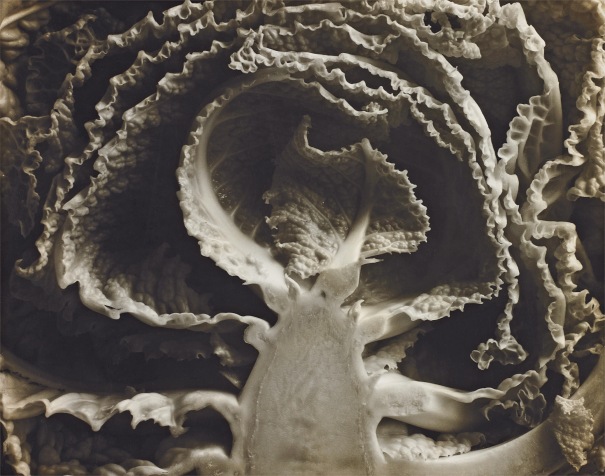Edward Weston Follow Dunes, Oceano 1936 Gelatin silver print, printed in the late 1940s or early 1950s. 7 5/8 x 8 1/2 in. (19.4 x 21.6 cm) Initialed and dated by the artist in pencil on the mount.
Provenance Private Collection, New York Literature Conger, Edward Weston Photographs from the Collection of the Center for Creative Photography , fig. 945 Aperture, Edward Weston Fifty Years , p. 168 Armitage, Fifty Photographs , pl. 13 Enyeart, Edward Weston’s California Landscapes, pl. 15 Harry N. Abrams, Inc., Edward Weston Forms of Passion , p. 211 Lodima Press, Edward Weston Life Work , pl. 72 Newhall, Edward Weston The Flame of Recognition , p. 45 Catalogue Essay Edward Weston began his iconic series of studies of the massive dunes at Oceano in 1934 when he visited the area with fellow photographer Willard Van Dyke. In his daybook entry for 20 April, he wrote: “I made several dune negatives that mark a new epoch in my work. I must go back there, - the material made for me!” ( The Daybooks of Edward Weston , p. 282). The massive dunes at Oceano created an ever-shifting landscape of pure and unadorned form, and the subject matter was indeed the perfect fit for Weston’s Modernist vision. The dunes were in a state of constant change, reshaped continuously by wind and water, and they presented completely new subject matter to Weston on each of his visits over the ensuing years. Weston created what is arguably his most famous dune study in 1936, the image offered here. Weston clearly recognized the photograph as an important one early-on, and included it in his 1937 article What is Photographic Beauty? in Camera Craft magazine. It hung in several important early solo exhibitions including his 1940 show at the Golden Gate International Exhibition, and in his 1946 retrospective at The Museum of Modern Art, New York. Read More
Edward Weston Follow Dunes, Oceano 1936 Gelatin silver print, printed in the late 1940s or early 1950s. 7 5/8 x 8 1/2 in. (19.4 x 21.6 cm) Initialed and dated by the artist in pencil on the mount.
Provenance Private Collection, New York Literature Conger, Edward Weston Photographs from the Collection of the Center for Creative Photography , fig. 945 Aperture, Edward Weston Fifty Years , p. 168 Armitage, Fifty Photographs , pl. 13 Enyeart, Edward Weston’s California Landscapes, pl. 15 Harry N. Abrams, Inc., Edward Weston Forms of Passion , p. 211 Lodima Press, Edward Weston Life Work , pl. 72 Newhall, Edward Weston The Flame of Recognition , p. 45 Catalogue Essay Edward Weston began his iconic series of studies of the massive dunes at Oceano in 1934 when he visited the area with fellow photographer Willard Van Dyke. In his daybook entry for 20 April, he wrote: “I made several dune negatives that mark a new epoch in my work. I must go back there, - the material made for me!” ( The Daybooks of Edward Weston , p. 282). The massive dunes at Oceano created an ever-shifting landscape of pure and unadorned form, and the subject matter was indeed the perfect fit for Weston’s Modernist vision. The dunes were in a state of constant change, reshaped continuously by wind and water, and they presented completely new subject matter to Weston on each of his visits over the ensuing years. Weston created what is arguably his most famous dune study in 1936, the image offered here. Weston clearly recognized the photograph as an important one early-on, and included it in his 1937 article What is Photographic Beauty? in Camera Craft magazine. It hung in several important early solo exhibitions including his 1940 show at the Golden Gate International Exhibition, and in his 1946 retrospective at The Museum of Modern Art, New York. Read More
.jpg)






Try LotSearch and its premium features for 7 days - without any costs!
Be notified automatically about new items in upcoming auctions.
Create an alert